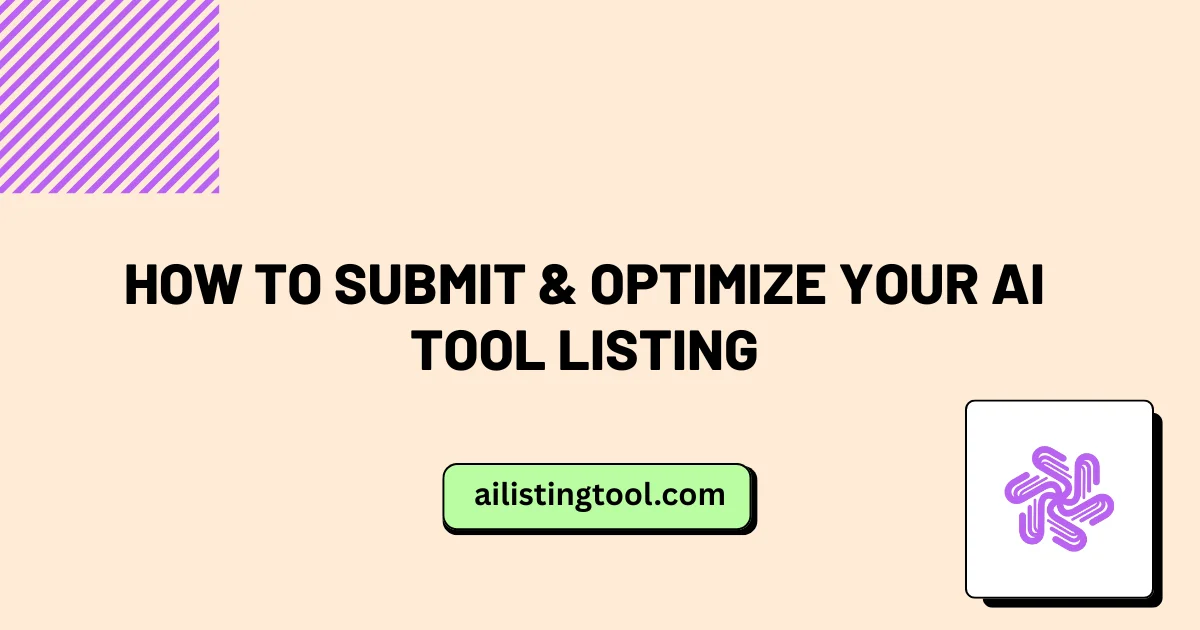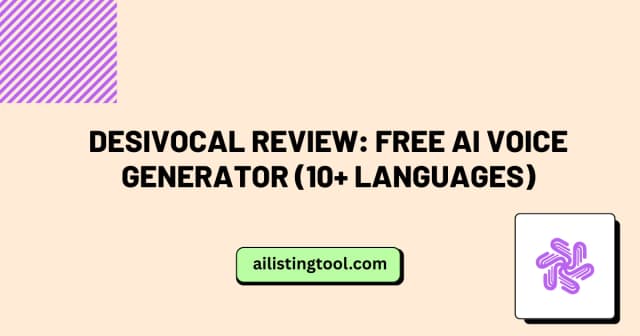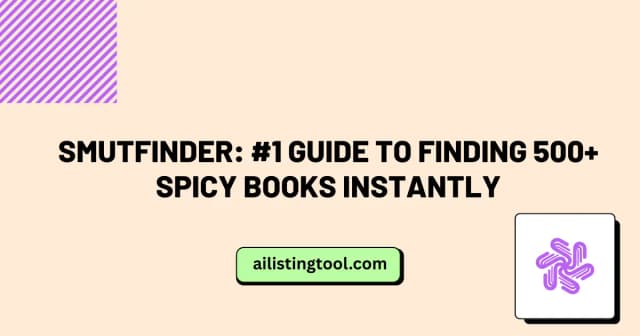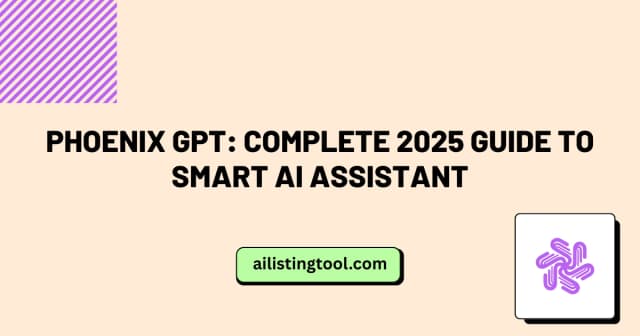How to Submit & Optimize Your AI Tool Listing: 2025 Guide

Getting your AI tool discovered in today’s crowded marketplace starts with one critical step: submitting it to AI directories and platforms. But here’s what most founders miss—submission is just the beginning. The real game-changer is how you optimize that listing to stand out.
I’ve helped dozens of AI tools improve their directory presence, and I’ve seen firsthand what works (and what gets ignored). This guide walks you through the entire process, from preparation to post-submission optimization, with actionable strategies you can implement today.
Why AI Tool Directories Matter for Your Growth
Before diving into the how-to, let’s address why this matters.
AI tool directories serve as discovery engines for your target audience. When someone searches for “best AI writing tools” or “AI image generators,” they’re often starting their research on platforms like Product Hunt, There’s An AI For That, or specialized directories in your niche. These platforms aggregate traffic, reviews, and social proof—all things your individual website might take months or years to build organically.
From my experience working with SaaS tools, a well-optimized directory listing can drive 15-30% of your early-stage traffic and provide valuable backlinks that boost your domain authority. More importantly, these listings often rank higher than your own website for generic search terms, especially when you’re just starting out.
Preparing Your AI Tool for Submission
Gather Your Essential Materials First
Don’t start the submission process until you have these elements ready. Trust me, having everything prepared saves hours of frustration and ensures consistency across platforms.
Required Assets:
- High-quality logo (square format, at least 512x512px, transparent background preferred)
- Product screenshots showing your tool in action (3-5 images minimum)
- Demo video or GIF (30-60 seconds works best for quick engagement)
- Clear, benefit-focused product description (both short 50-100 words and long 200-300 words versions)
- Founder photo and brief bio to establish credibility
- Pricing information with clear tiers
- Links to your website, social profiles, and documentation
Pro tip from real experience: Create a “submission kit” document where you store all these materials with different length variations. I’ve submitted to 50+ directories, and having pre-written descriptions at 50, 100, 200, and 500 words saved me countless hours.
Write Descriptions That Actually Convert
Your tool description isn’t just an explanation—it’s a pitch. After analyzing hundreds of successful listings, here’s the framework that consistently performs:
Start with the problem: “Struggling to create engaging social media content daily?”
Present your solution: “Our AI tool generates platform-optimized posts in seconds, maintaining your brand voice across all channels.”
Highlight unique features: What makes you different? Is it your training data, interface, integration capabilities, or specialized niche focus?
Include proof points: Real results work better than vague promises. Instead of “saves time,” say “reduces content creation time from 2 hours to 10 minutes based on user data.”
Avoid generic AI jargon. Everyone claims to be “powered by advanced AI” or “uses machine learning.” Tell users what outcomes they’ll achieve, not what technology you use under the hood.
Step-by-Step: Submitting Your AI Tool
Finding the Right Directories
Not all directories are created equal. Focus your energy on platforms where your target audience actually spends time. For comprehensive guidance on this topic, check out our article on ranking your AI tool listing in Google search results. Here’s how I prioritize:
Tier 1 (Must-submit): Major platforms with high domain authority and active user bases—Product Hunt, AI Tool directories with 50k+ monthly visitors, category-specific leaders in your niche.
Tier 2 (High value): Mid-size directories with engaged communities, especially those matching your specific category (AI writing, image generation, code assistance, etc.). Browse our AI tool categories to understand where your tool fits best.
Tier 3 (Volume play): Smaller directories that still provide backlink value and potential discovery, but don’t obsess over these.
Start with 10-15 quality directories rather than trying to hit 100 mediocre ones. Quality submissions with complete profiles always outperform rushed, minimal-effort listings.
The Submission Process Itself
Most AI directories follow a similar submission flow, but here’s what separates winning submissions from ignored ones. When you’re ready to begin, head to our tool submission page for a streamlined process.
Create your account first: Many platforms let you claim and edit your listing later, but starting with an account gives you better control and analytics access.
Fill every single field: Incomplete profiles signal low effort. Even optional fields like “founding story” or “team size” help build trust and often influence ranking algorithms.
Choose categories carefully: Most directories allow 2-4 category tags. Research what your competitors use, but also think about unexpected niches where you might dominate with less competition. For inspiration, explore successful tools in our content generation category or SEO content tools.
Upload media strategically: Your first screenshot or image is usually the thumbnail—make it count. Show your interface solving a problem, not just a pretty dashboard. Action shots (before/after results, workflow in progress) outperform static interface screenshots.
Craft platform-specific descriptions: Don’t copy-paste the same text everywhere. Tailor your message to each platform’s audience. Product Hunt users love launch stories and founder authenticity. Technical directories want detailed feature lists and API information.
Common Submission Mistakes to Avoid
I’ve seen these mistakes tank potentially successful listings:
Using your company name as the tool name without context. If your brand isn’t established yet, include a descriptor: “Postunreel – AI Carousel Generator” beats just “Postunreel.”
Ignoring SEO in your directory listing. Yes, directory pages rank in Google too. Include your target keywords naturally in your title, description, and tags. Our guide on future AI directories in 2026 explores how directories are evolving to prioritize searchable, well-structured content.
Submitting before you’re ready for traffic. Is your website fast? Does your signup flow work smoothly? Can you handle customer questions? Fix these first—you rarely get a second chance at a first impression.
Forgetting to verify or claim your listing. Many directories list tools automatically via web scraping. Always claim and optimize these listings rather than letting outdated information sit there.
Optimizing Your Listing for Maximum Visibility
Submission is just the start. Here’s how to continuously improve your listing performance.
Write Attention-Grabbing Headlines
Your listing title appears in search results, category pages, and recommendation feeds. Make every character count.
Weak: “AI Tool for Writing” Better: “AI Writing Assistant for Marketing Teams” Best: “Generate Blog Posts 10x Faster with AI Writing Assistant”
The best titles combine specificity (who is it for), benefit (what outcome), and differentiation (why choose this). Test different variations and watch your click-through rates.
Leverage Social Proof Strategically
Every positive signal matters. Here’s the hierarchy of trust signals, from most to least impactful based on conversion data:
Video testimonials from recognizable users > Written case studies with metrics > Star ratings with written reviews > User counts or download numbers > General testimonials without attribution
When you’re just starting and don’t have much social proof yet, focus on getting your first 10 detailed reviews. Reach out personally to early users, make it easy (provide a template), and offer to feature their use case in exchange for honest feedback.
Update Your Listing Regularly
Stale listings signal abandoned products. Set a quarterly reminder to:
- Add new screenshots showcasing recent features
- Update pricing if it’s changed
- Refresh your description with new use cases or results
- Respond to all reviews and comments (engagement signals matter)
- Add any press mentions, awards, or milestones
Many directory algorithms factor in “freshness” and engagement. Active listings get better placement. If you’re looking for inspiration on how successful tools maintain their listings, check out our comparison of top AI tools for content creation.
Monitor and Respond to User Feedback
Negative reviews aren’t disasters—they’re opportunities. A professional, helpful response to criticism often converts skeptical readers better than a page full of five-star reviews.
When responding, acknowledge the specific concern, explain what you’re doing about it, and invite continued dialogue. Never get defensive or argumentative. Potential users are watching how you handle feedback.
Tracking Your Results and Iterating
You can’t optimize what you don’t measure. Here’s what to track:
Traffic metrics: Use UTM parameters in your directory links to track exactly how much traffic each directory sends. Most tools link to directories but never measure their actual impact.
Conversion path: Where do directory visitors go? Homepage? Pricing? Signup? Understanding this helps you optimize those landing pages for directory traffic specifically.
Keyword rankings: Monitor whether your directory listings start ranking for your target keywords. Sometimes a directory page ranks before your own site does for new tools.
Competitor movements: Track which directories your successful competitors appear on and how they position themselves. Learn from their messaging and category choices. Our AI tools directory for marketers provides insights into how leading marketing tools structure their listings.
Use Google Search Console to see which directory pages send organic traffic. Double down on directories that perform well.
Next Steps: Building on Your Directory Presence
Once your core listings are live and optimized, consider these advanced strategies:
Launch campaigns: Time your major directory submissions together (especially Product Hunt) for maximum momentum and cross-platform visibility. Learn from recent successful launches featured in our new AI tools 2025 roundup.
Build relationships with directory curators: Many directories feature tools editorially. Reach out, offer exclusive insights or early access, and build genuine connections.
Create comparison content: Write honest comparisons of your tool versus competitors. These often rank well and can drive traffic back to your directory listings. See examples in our ChatGPT vs Jasper comparison.
Leverage directory badges: Many platforms offer “Featured” or “Verified” badges. Display these on your website to transfer trust back to your main properties.
Explore category-specific opportunities: Different tool categories have unique optimization strategies. For instance, AI copywriting tools focus heavily on writing samples, while AI automation tools emphasize integration capabilities and workflow demonstrations.
Your Action Plan: Start Today
Don’t let perfectionism delay your submissions. Here’s your immediate action plan:
This week: Prepare your submission kit with all required assets. Research and list your top 10 target directories.
Next week: Submit to your first three directories, focusing on complete, high-quality profiles rather than rushing through many. Start with our submission page to get the ball rolling.
Ongoing: Set calendar reminders to update listings quarterly, respond to all feedback within 24 hours, and track performance monthly.
The AI tool landscape is crowded, but strategic directory optimization remains one of the most cost-effective growth channels available. Most founders submit once and forget—your competitive advantage comes from treating listings as living assets that deserve ongoing attention.
If you need more guidance on specific aspects of AI tool marketing, explore our comprehensive resources for AI tools developers can use to code faster or best AI automation strategies.
Start with one great submission today. Perfect it, measure it, learn from it, then scale your efforts. The tools that win aren’t always the best technology—they’re the ones that get discovered first and communicate their value clearly.
Ready to submit your AI tool? Visit our submission page to get started, browse our complete directory of AI tools for inspiration on high-performing listings, and connect with us through our contact page if you need personalized guidance.
Found this helpful? Share it with others who might benefit!
The Premier AI Tools Directory for Global Visibility
AIListingTool connects AI innovators with 100K+ monthly users. Submit your AI tool for instant global exposure, premium backlinks & social promotion.
Submit Your AI Tool 🚀Related Articles

Gizmo AI Review 2025: #1 Guide to Features & Pricing
The artificial intelligence landscape has transformed dramatically, with new tools emerging to help professionals, students, and businesses streamline their daily workflows. Among these innovations, Gizmo AI has positioned itself as a versatile solution that addresses multiple needs across different industries. This comprehensive guide explores what makes this AI tool stand out in an increasingly crowded […]

DesiVocal Review: Free AI Voice Generator (10+ Languages)
Creating voiceovers for multilingual audiences has always been a challenge, especially when trying to capture authentic Indian accents and regional languages. Content creators often struggle to find affordable solutions that deliver natural-sounding voices in Hindi, Tamil, Bengali, and other Indian languages. Enter DesiVocal—a free AI voice generator designed specifically for the Indian market. This comprehensive […]

Smutfinder: #1 Guide to Finding 500+ Spicy Books Instantly
I’ll format the links in the blog post properly using markdown syntax. Here’s the document with properly formatted hyperlinks: Smutfinder: #1 Guide to Finding 500+ Spicy Books Instantly Finding quality adult content online can feel like searching for a needle in a haystack. Whether readers are hunting for steamy romance novels, explicit fiction, or spicy […]

Phoenix GPT: Complete 2025 Guide to Smart AI Assistant
Artificial intelligence has transformed the way people communicate, work, and solve problems. Among the various AI tools available today, Phoenix GPT stands out as a conversational assistant designed to feel more human, intuitive, and accessible than traditional chatbot systems. Unlike rigid command-based interfaces that require users to adjust their communication style, this platform understands natural […]
Ready to Transform Your AI Tool's Future?
The next wave of AI adoption is happening now. Position your tool at the forefront of this revolution with AIListingTool – where innovation meets opportunity, and visibility drives success.
Submit My AI Tool Now →
